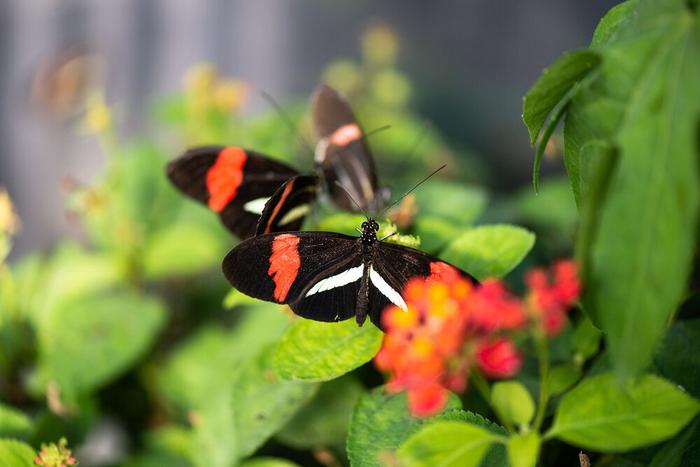Tropical Heliconius butterflies are well known for the bright colour patterns on their wings. These striking colour patterns not only scare off predators – the butterflies are poisonous and are distasteful to birds – but are also important signals during mate selection. A team led by evolutionary biologist Richard Merrill from LMU Munich, in cooperation with researchers from the Universidad del Rosario in Bogotá (Colombia) and the Smithsonian Tropical Research Institute (Panama), has now exploited the diversity of warning patterns of various Heliconius species to investigate the genetic foundations of these preferences. In the process, the scientists identified a gene that is directly linked to evolutionary changes in a visually guided behaviour, the first time such a connection has been demonstrated in an animal, as they report in the journal Science.

Credit: Carolin Bleese / LMU
Tropical Heliconius butterflies are well known for the bright colour patterns on their wings. These striking colour patterns not only scare off predators – the butterflies are poisonous and are distasteful to birds – but are also important signals during mate selection. A team led by evolutionary biologist Richard Merrill from LMU Munich, in cooperation with researchers from the Universidad del Rosario in Bogotá (Colombia) and the Smithsonian Tropical Research Institute (Panama), has now exploited the diversity of warning patterns of various Heliconius species to investigate the genetic foundations of these preferences. In the process, the scientists identified a gene that is directly linked to evolutionary changes in a visually guided behaviour, the first time such a connection has been demonstrated in an animal, as they report in the journal Science.
For their study, the researchers carried out hundreds of behavioural experiments to investigate the mating preferences of three Heliconius species in Colombia: Heliconius melpomene and Heliconius timareta, both of which have a bright red band on their forewing, and Heliconius cydno, which has a white forewing band. They discovered that males of all three species prefer partners that look like themselves, with no differences in the preferences of the two more distantly related red species.
Using genomic analyses, the researchers demonstrated that the preference for red females is associated with a genomic region where hybridization between these two red species has resulted in sharing of genetic material. “We managed to identify regucalcin1 as a key gene controlling visual preference, in these butterflies,” says Matteo Rossi, who carried out research on the butterflies in Merrill’s lab alongside fellow PhD candidate Alexander Hausmann. “If regucalcin1 is silenced, it impairs courtship toward conspecific females, proving a direct link between gene and behaviour,” explains Rossi.
Genetic exchange through hybridization
Further analyses by the scientists showed that regucalcin1 was transferred from H. melpomene to H. timareta sometime in their evolutionary past. “We’ve known for quite a while that the red colour pattern gene was introduced from one species to the other through hybridization, and suspected that the same might be true for the corresponding preference. To finally show it, and identify the specific gene is really exciting,” says Carolina Pardo-Diaz, Dean of Biology at the Universidad del Rosario, and one of the lead authors on the paper. Thanks to regucalcin1, the attractiveness of red females and thus the reproductive success of H. timareta was increased.
“We see differences in visual preferences all around us in nature when animals choose who to mate with. With our results, we were able to establish a direct link between a particular visual preference and a specific gene for the first time, and also demonstrate that hybridization can play an important role in the evolution of these behaviours,” emphasises Merrill.
Journal
Science
DOI
10.1126/science.adj9201
Method of Research
Experimental study
Subject of Research
Animals
Article Title
Adaptive introgression of a visual preference gene
Article Publication Date
22-Mar-2024




